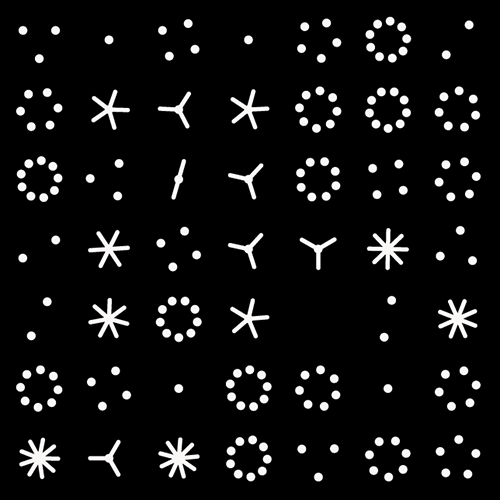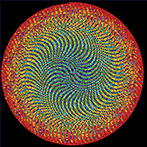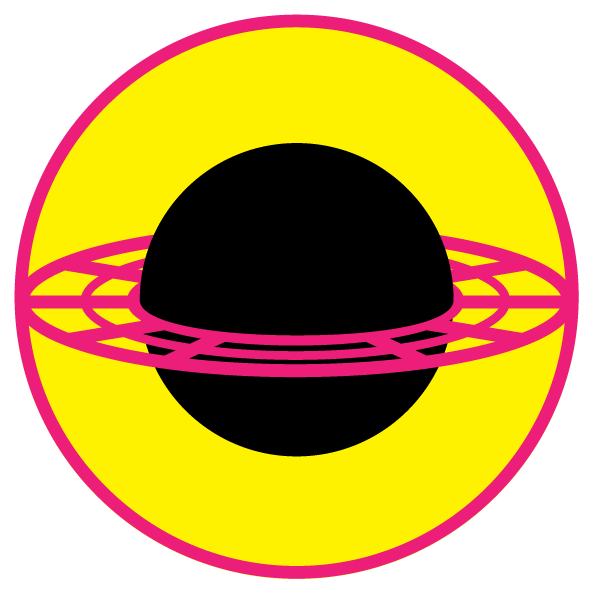 buy artwork
buy artwork
`\pi` Day 2017 Art Posters - Star charts and extinct animals and plants
On March 14th celebrate `\pi` Day. Hug `\pi`—find a way to do it.
For those who favour `\tau=2\pi` will have to postpone celebrations until July 26th. That's what you get for thinking that `\pi` is wrong. I sympathize with this position and have `\tau` day art too!
If you're not into details, you may opt to party on July 22nd, which is `\pi` approximation day (`\pi` ≈ 22/7). It's 20% more accurate that the official `\pi` day!
Finally, if you believe that `\pi = 3`, you should read why `\pi` is not equal to 3.
Caelum non animum mutant qui trans mare currunt.
—Horace
This year: creatures that don't exist, but once did, in the skies.
This year's `\pi` day song is Exploration by Karminsky Experience Inc. Why? Because "you never know what you'll find on an exploration".
create myths and contribute!
Want to contribute to the mythology behind the constellations in the `\pi` in the sky? Many already have a story, but others still need one. Please submit your stories!
Here I make available all the files you need to reconstruct the chart. All files are plain text and designed to be easily parsable.
 buy artwork
buy artwork
For the simplest chart, you'll need the star catalogue which already provides the longitude and latitude coordinates for each star. It'll be up to you to choose and calculate a projection.
You can then layer constellations, which are defined by a list of edges. If you like, you can draw boundaries around each constellation, which are also provided.
Star-to-constellation mapping is also given, which allows you to create labels for the stars within each constellation based on relative brightness.
Finally, you can get the species details for each constellation, including the Latin name of the species, Wikipedia URL and (for many) the mythology of the constellation.
star catalogue
The star catalog generated from the first 12 million digits of `\pi`.
DOWNLOAD # idx digits name x y z long lat dist mabs mapp 0 314159265358 a -1859 926 35 145.339 38.384 2077.157 3.00 14.59 1 979323846264 b 4793 -2616 126 -38.404 -39.555 5461.884 -1.00 12.69 2 338327950288 c -1617 -2205 -472 -110.162 32.164 2774.797 3.00 15.22 3 419716939937 d -803 -3307 493 -105.489 3.655 3438.620 2.00 14.68 ... 999996 601538500580 cexhk 1015 -1150 -442 -48.144 -14.704 1596.273 -5.00 6.02 999997 420478142596 cexhl -796 2814 -241 97.939 14.471 2934.330 1.00 13.34 999998 278256213419 cexhm -2218 621 -159 156.900 46.719 2308.776 4.00 15.82 999999 453839371943 cexhn -462 -1063 -306 -95.924 26.937 1198.770 -2.00 8.39
constellation definitions
Constellations were manually defined. Each constellation has a name and abbreviation (first 3 characters unless longer is required to uniquely specify it). Shown next is the number of stars used to define the constellation and their names, as appear in the star catalogue file above. Next is the number of edges and the star pairs that define the edges of the constellation. The edges are not in any particular order and have no direction. Any spaces in names are encoded with _.
DOWNLOAD # idx n_stars n_edges name abbrev stars edges ... 2 3 3 alaotra ala blts,btosf,cbkbw btosf-cbkbw,blts-btosf,blts-cbkbw 3 4 4 alloperla all ghyr,pwkn,ssrx,ugwt pwkn-ssrx,pwkn-ghyr,ugwt-pwkn,ssrx-ghyr 4 2 1 aplonis apl cbocd,rllm rllm-cbocd ...
You can use this file to quickly search for certain shapes. For example, triangular constellations are those that have 3 stars and 3 edges.
> grep " 3 3" constellations.def.txt 2 3 3 alaotra ala blts,btosf,cbkbw btosf-cbkbw,blts-btosf,blts-cbkbw 16 3 3 camptor camp benxf,bqvh,bwqed bqvh-benxf,bwqed-bqvh,bwqed-benxf 26 3 3 desmodus des bfnqu,mork,zwzy bfnqu-mork,zwzy-bfnqu,zwzy-mork 27 3 3 ectopistes ect bopmt,cbquf,wmnw cbquf-bopmt,wmnw-cbquf,wmnw-bopmt 30 3 3 hoopoe hoo bpsop,bvmjh,tryh tryh-bvmjh,bpsop-tryh,bpsop-bvmjh 31 3 3 huia hui ccteo,xbvq,yqet xbvq-yqet,ccteo-xbvq,ccteo-yqet 39 3 3 malpaisomys mal bucqd,likq,nqn nqn-bucqd,likq-nqn,likq-bucqd 41 3 3 mariana mar gmps,jydb,pcjx pcjx-gmps,jydb-pcjx,jydb-gmps 49 3 3 palaeoaldrovanda pal bedae,oife,saz bedae-saz,oife-bedae,oife-saz 63 3 3 rhynia rhy bpviv,cenuk,hivz bpviv-hivz,cenuk-bpviv,cenuk-hivz 65 3 3 silphium sil bjesg,bmquw,bpxia bmquw-bpxia,bjesg-bmquw,bjesg-bpxia 69 3 3 tadorna tad bukqe,cbtrx,epdx cbtrx-epdx,bukqe-cbtrx,bukqe-epdx 72 3 3 traversia tra fcnw,fywb,puib fywb-fcnw,puib-fywb,puib-fcnw 80 3 3 yersinia yer colq,ibls,zgvy ibls-zgvy,colq-ibls,colq-zgvy
constellation boundaries
The boundaries were manually defined. Shown here, for each constellation, is the constellation's area, perimeter center and boundary `(x,y)` pairs, delimited by : and represent a closed polygon that encloses the constellation's stars.
All values are longitude and latitude. The three constellations listed below are ones with smallest area.
DOWNLOAD # abbrev area perimeter centroid_xy boundary_xy_pairs ... com 74.83 34.96 -102.50,26.25 -100.00,30.00:-102.50,30.00:-105.00,30.00:-107.50,30.00:-107.50,27.50: -107.50,25.00:-107.50,22.51:-105.00,22.51:-102.50,22.51:-100.00,22.51: -97.51,22.51:-97.51,25.00:-97.51,27.50:-97.51,30.00:-100.00,30.00 pal 50.02 30.00 3.43,-40.93 5.00,-37.49:2.50,-37.49:0.00,-37.49:0.00,-40.00:0.00,-42.50:0.00,-45.00: 2.50,-45.00:5.00,-45.00:5.00,-42.50:7.49,-42.50:7.49,-40.00:7.49,-37.49:5.00,-37.49 sil 37.57 25.02 115.00,-51.25 115.00,-47.50:112.49,-47.50:112.49,-50.00:112.49,-52.49:112.49,-55.00: 115.00,-55.00:117.50,-55.00:117.50,-52.49:117.50,-50.00:117.50,-47.50:115.00,-47.50
The boundary polygons abut but do not overlap and they cover the entire sky. There is one polygon per consetllation. The total area of all constellations is `360 × 180 = 36800`.
constellation star membership
This is a list of all the stars on the chart and their constellation membership. A star is considered to be in a constellation if it falls within the constellation boundary.
The `i` and `j` indexes give the relative brightness of the star on the map and in the constellation, respectively. If a star is used to define the constellation edges it gets a + otherwise -.
DOWNLOAD # abbreviation star i j mapp on_edge? aep bkawv 35 0 1.34 + aep gql 65 1 1.63 + aep cavix 72 2 1.71 + aep bqxvm 137 3 2.25 + aep tjow 158 4 2.31 + aep beelq 176 5 2.39 + ... yer jjlj 39365 412 7.24 - yer bgswm 39464 413 7.24 - yer ittu 39546 414 7.24 - yer wakp 39556 415 7.24 - yer bedks 39667 416 7.25 - yer gxzo 39817 417 7.25 -
To lookup the 10 brightest stars, sort on the i index. Here we see that megal (Megalodon) has the brightest star in the sky, jkxo with apparent magnitude `-2.05`. The next two brighest stars are in mam (Mammuthus) and ara (Araucaria).
> cat constellations.stars.txt | sort -n +2 -3 | head -10
megal jkxo 0 0 -2.05 +
mam btsqy 1 0 -0.73 +
ara ccijs 2 0 -0.38 +
rap btaum 3 0 0.26 +
urs bxlss 4 0 0.26 +
tec bgrdk 5 0 0.43 +
cop itwr 6 0 0.45 +
ara mrvq 7 1 0.54 +
phe loju 8 0 0.54 +
mam bhlbw 9 1 0.55 +
To get a list of the brightest star in each constellation, just search for " 0 ". Below I show this list sorted by brightness.
> cat constellations.stars.txt | grep " 0 "| sort -n +4 -5
megal jkxo 0 0 -2.05 +
mam btsqy 1 0 -0.73 +
ara ccijs 2 0 -0.38 +
rap btaum 3 0 0.26 +
urs bxlss 4 0 0.26 +
tec bgrdk 5 0 0.43 +
cop itwr 6 0 0.45 +
phe loju 8 0 0.54 +
kel bnhwx 11 0 0.59 +
spe rtep 13 0 0.71 +
...
nes vxou 299 0 2.80 -
aur bmjvf 307 0 2.81 +
tra puib 318 0 2.83 +
pip cecq 358 0 2.91 +
pal oife 389 0 2.97 +
swa gvr 463 0 3.12 +
hui ccteo 485 0 3.17 +
ple bzqur 506 0 3.20 +
com ygrn 875 0 3.64 +
car yjkn 933 0 3.68 +
For example, tec (Tecopa) has bgrdk as its brightest star, which is 6th brightest in the sky with an apparent magnitude of 0.43.
The constellation whose brightest star is dimmest of all first brightest stars is car (Caracara). Its brightest star is yjkn which is 934th brightest in the sky with an apparent magnitude of 3.68.
To get the number of stars in each constellation, just add the number of times the constellation abbreviation appears. Bron has the most stars of any constellation, more than twice as many as the next one, archaeo (Archaeopteryx). Both car (Caracara) and por (Porzana) have only 7 stars each, the fewest of all constellations.
5230 bro
2287 archaeo
2205 thy
2155 kim
1838 archaea
1789 came
1768 ard
...
20 megal
19 swa
17 mar
12 rhy
8 sil
7 por
7 car
constellation names, stories and links
The constellations are in no particular order in this file.
DOWNLOAD # constellation name # hemisphere (n north, s south, b both) # common name # Latin name # extinction date # URL # optional story aplonis n mysterious bird of Ulieta Aplonis ulietensis 1774-1850 https://en.wikipedia.org/wiki/Raiatea_starling desmodus n Giant Vampire Bat Desmodus draculae Pleistocene or early Holocene https://www.thoughtco.com/recently-extinct-shrews-bats-and-rodents-1092147 It is thought that each night Desmodus flies up against the dome of the sky, looking for a way to escape. ...
Beyond Belief Campaign BRCA Art
Fuelled by philanthropy, findings into the workings of BRCA1 and BRCA2 genes have led to groundbreaking research and lifesaving innovations to care for families facing cancer.
This set of 100 one-of-a-kind prints explore the structure of these genes. Each artwork is unique — if you put them all together, you get the full sequence of the BRCA1 and BRCA2 proteins.
Propensity score weighting
The needs of the many outweigh the needs of the few. —Mr. Spock (Star Trek II)
This month, we explore a related and powerful technique to address bias: propensity score weighting (PSW), which applies weights to each subject instead of matching (or discarding) them.

Kurz, C.F., Krzywinski, M. & Altman, N. (2025) Points of significance: Propensity score weighting. Nat. Methods 22:1–3.
Happy 2025 π Day—
TTCAGT: a sequence of digits
Celebrate π Day (March 14th) and sequence digits like its 1999. Let's call some peaks.

Crafting 10 Years of Statistics Explanations: Points of Significance
I don’t have good luck in the match points. —Rafael Nadal, Spanish tennis player
Points of Significance is an ongoing series of short articles about statistics in Nature Methods that started in 2013. Its aim is to provide clear explanations of essential concepts in statistics for a nonspecialist audience. The articles favor heuristic explanations and make extensive use of simulated examples and graphical explanations, while maintaining mathematical rigor.
Topics range from basic, but often misunderstood, such as uncertainty and P-values, to relatively advanced, but often neglected, such as the error-in-variables problem and the curse of dimensionality. More recent articles have focused on timely topics such as modeling of epidemics, machine learning, and neural networks.
In this article, we discuss the evolution of topics and details behind some of the story arcs, our approach to crafting statistical explanations and narratives, and our use of figures and numerical simulations as props for building understanding.

Altman, N. & Krzywinski, M. (2025) Crafting 10 Years of Statistics Explanations: Points of Significance. Annual Review of Statistics and Its Application 12:69–87.
Propensity score matching
I don’t have good luck in the match points. —Rafael Nadal, Spanish tennis player
In many experimental designs, we need to keep in mind the possibility of confounding variables, which may give rise to bias in the estimate of the treatment effect.

If the control and experimental groups aren't matched (or, roughly, similar enough), this bias can arise.
Sometimes this can be dealt with by randomizing, which on average can balance this effect out. When randomization is not possible, propensity score matching is an excellent strategy to match control and experimental groups.
Kurz, C.F., Krzywinski, M. & Altman, N. (2024) Points of significance: Propensity score matching. Nat. Methods 21:1770–1772.
Understanding p-values and significance
P-values combined with estimates of effect size are used to assess the importance of experimental results. However, their interpretation can be invalidated by selection bias when testing multiple hypotheses, fitting multiple models or even informally selecting results that seem interesting after observing the data.
We offer an introduction to principled uses of p-values (targeted at the non-specialist) and identify questionable practices to be avoided.

Altman, N. & Krzywinski, M. (2024) Understanding p-values and significance. Laboratory Animals 58:443–446.



















